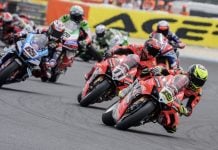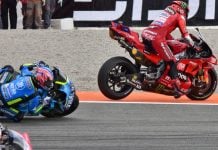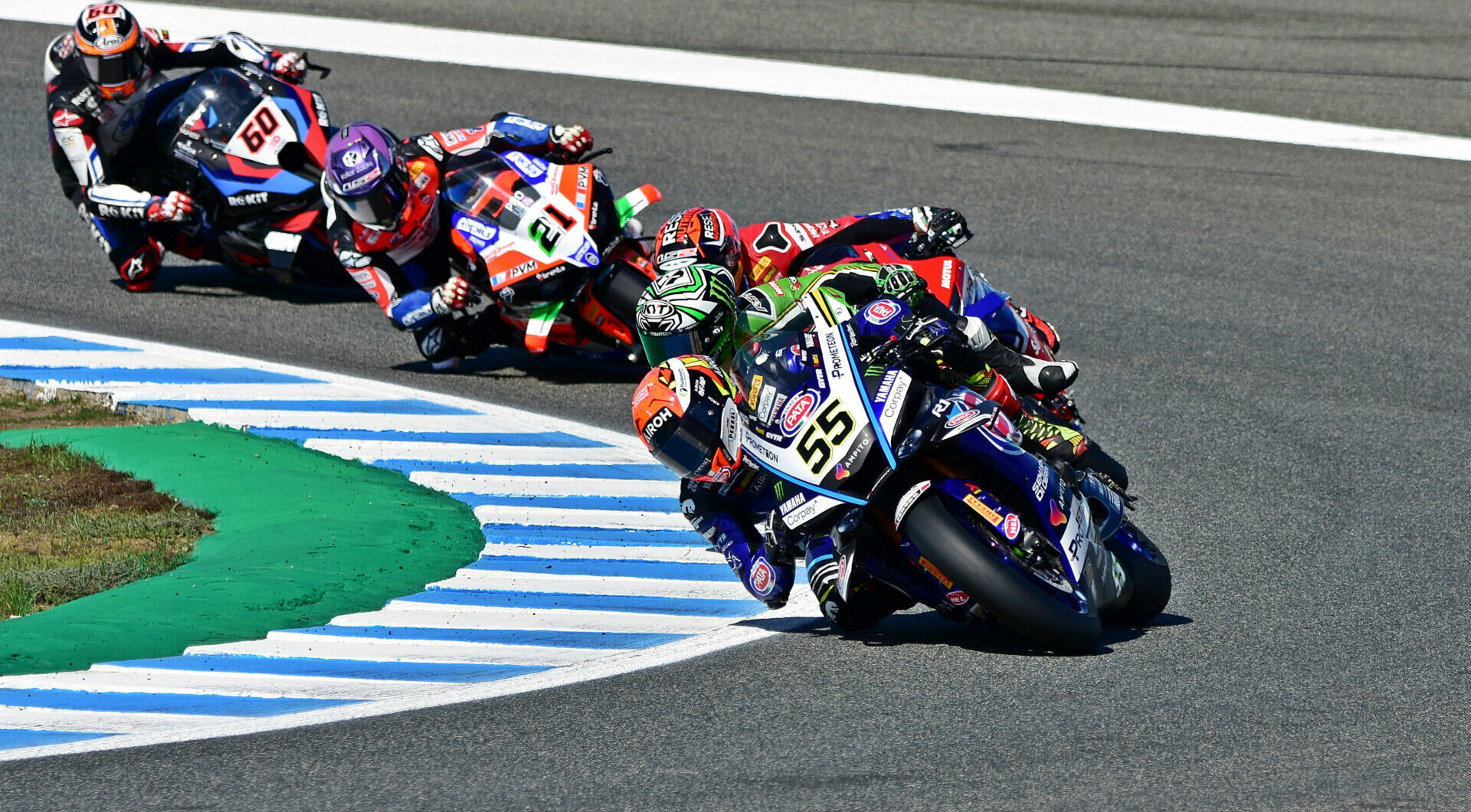Interview: World Superbike Executive Director Gregorio Lavilla:
“It’s Always Going To Be Cat-And-Dog …”
By Michael Gougis
Gregorio Lavilla’s job is a bit like juggling chainsaws. Overseeing the rules and class structure for the Superbike World Championship requires him to chase market changes, balance performance between wide varieties of machines, and create and eliminate classes. He has to find new ways to reduce performance in the face of an army of engineers whose sole purpose in life is to find a way to make racebikes go faster. He has to keep an ever-shifting cast of manufacturers happy enough that they keep racing. And he has to do so without appearing tone-deaf to a world outside of motorcycle racing that demands increasingly cleaner and more efficient machinery.
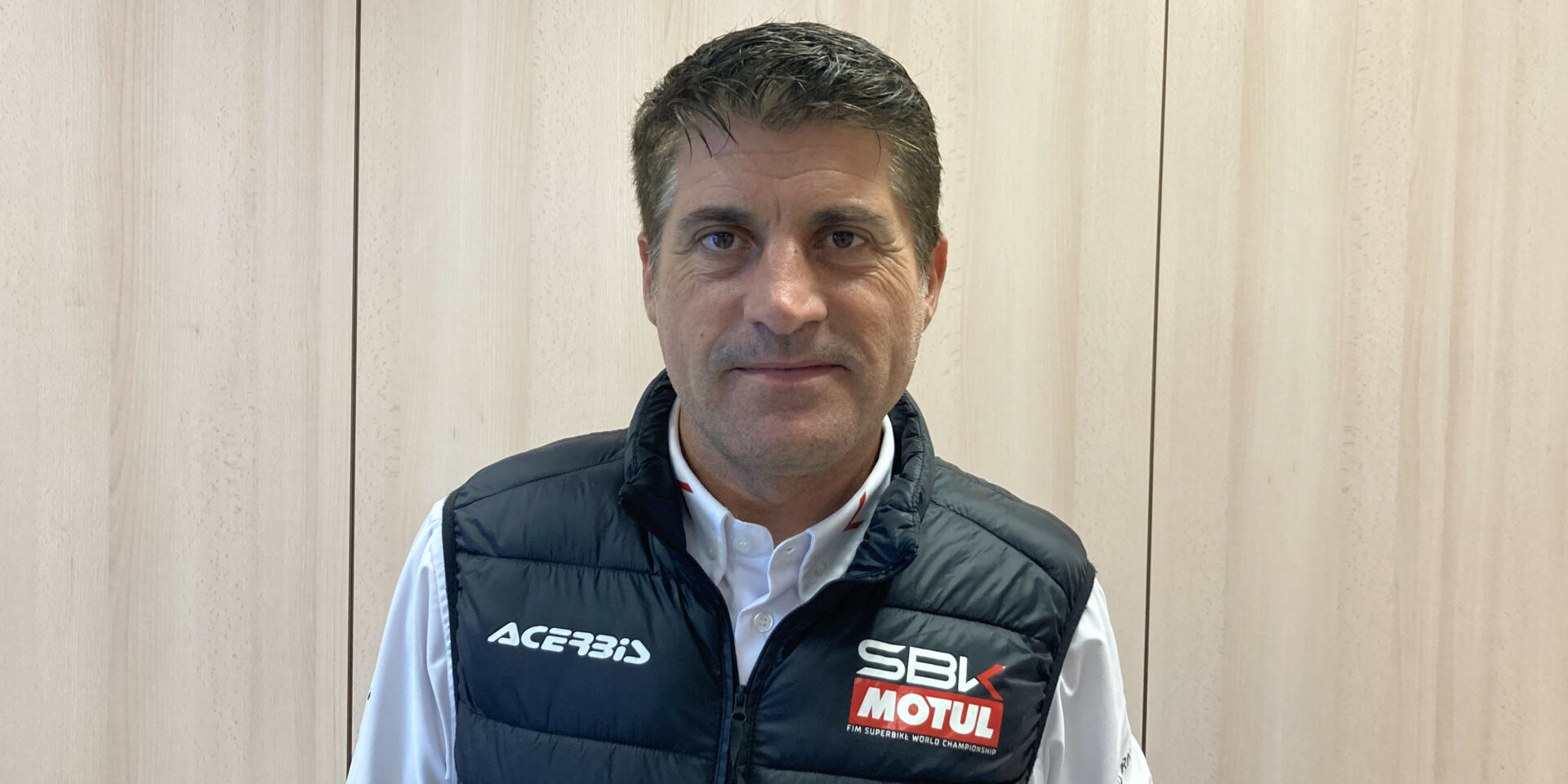
At the end of 2024, Lavilla, a former racer in MotoGP, 500cc GP and 250cc Grand Prix as well as in World Superbike, and a British Superbike Champion, sat down with Roadracing World to discuss what the future held for the World Superbike World Championship. He talked about upcoming changes to the entry-level race class; new tools to balance machine performance in Superbike; and even the possibility that Supersport could become the premier category in the series, second only to MotoGP in terms of worldwide status and prestige.
The existing Supersport300 class is going away at the end of 2025, to be replaced with bikes with double their power output, Lavilla says. The goal is to react to changes in the market and to make it easier for riders to make the jump from the entry-level class to Supersport, the next-faster category. Right now, the Supersport300 machines make about 45 horsepower and Supersport bikes about 140. The goal for the new class will be a power output of about 80 to 90 horsepower, according to Lavilla.
“Right now, in terms of power, we have quite a big gap from the Supersport300 to the following class, which is Supersport. We felt like the Supersport300 class worked for the purpose for which it was created, but now the market has evolved, and there are new products available for which we can see a good fit for having an affordable entry class but are for more performance machines,” Lavilla says.
“(We want) to give a little bit more punch to the teams and riders, to be able to enjoy World Championship tracks with a little more power and make it easier to make the transition to Supersport, so it would not be such a big jump in terms of power. Some riders can adapt very quickly, obviously. But others take more time. And unfortunately, this is a sport where there is not much time that the teams and sponsors give you. So if you are able to be a bit more prepared–the skills will be more in line with the class that follows, and that should help with the transition.
“It will not be such a big jump in the lap times. It will be more powerful, but it will be more heavy, and honestly, the Supersport300s are fast, very fast!”
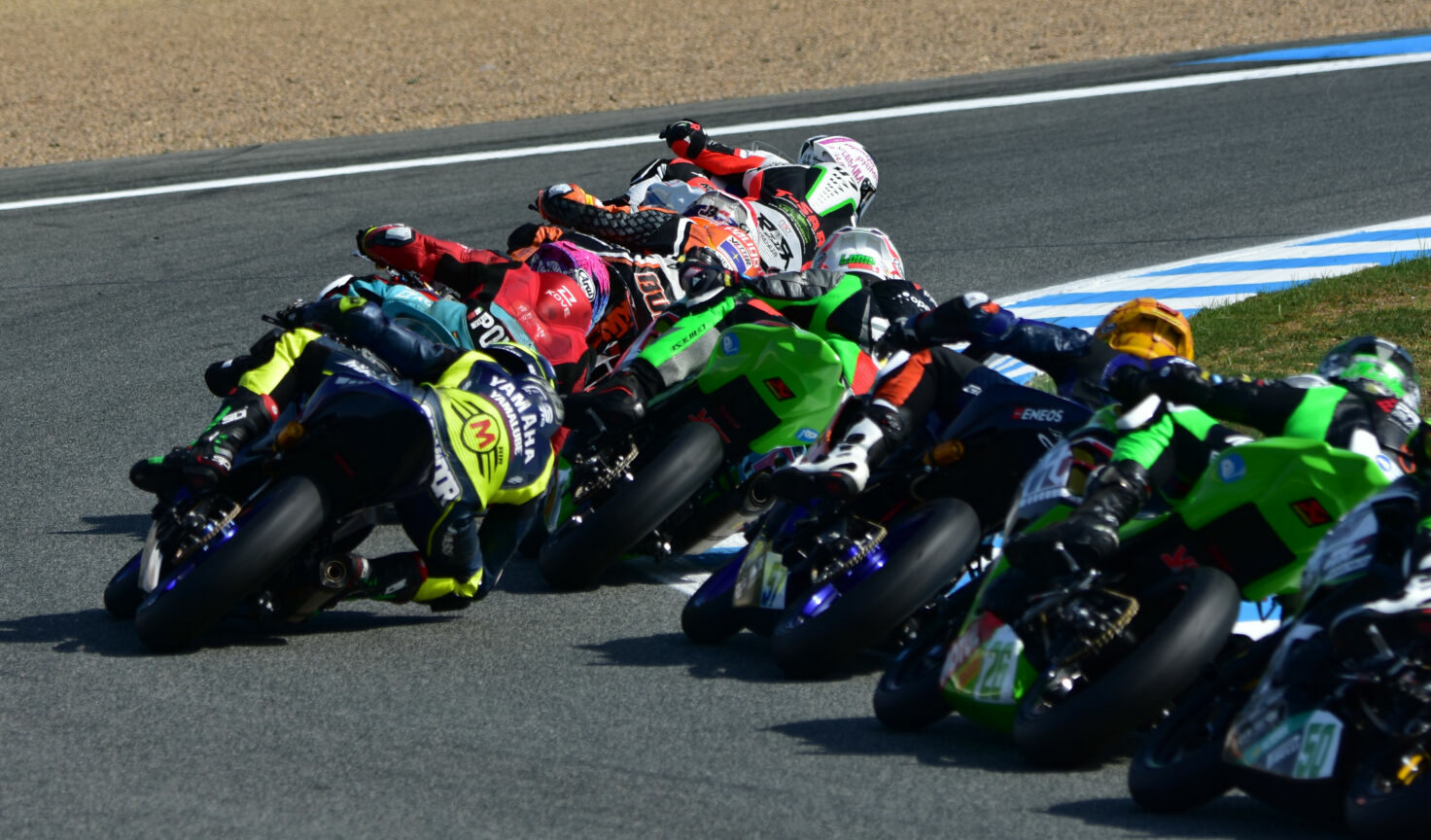
Having managed to do a decent job of balancing performance among a wide variety of machines in the current Next Generation Supersport category, the series is hoping to do the same for the new entry-level class. While the V-Twin Ducati Panigale V2 clearly was the machine to be on in World Supersport for 2024, the Inline-4 Yamaha YZF-R6 still took six race wins and MV Agusta’s three-cylinder F3 800 RR was on the podium.
Right now, Lavilla says, eight manufacturers from around the world have expressed interest in the new class, with machines including Twins, Triples, and Fours. And the interest of Chinese manufacturers in racing is not to be overlooked. QJMotors raced its SRK 800 RR, a 778cc Inline-4, in Supersport in 2024, and World Superbike wants to be sure that Chinese manufacturers have a place on the grid.
“So now we have to analyze all the different models of the manufacturers who have said they are interested. We think it will be good for the sport to have more manufacturers,” Lavilla says. “We need to start to deploy the technical regulations and the balance and collect the machines and do dyno tests. They have a lot of work to do. It’s not an easy task.”
Lavilla says the series has a new tool for balancing and reducing performance in the 2025 Superbike class–fuel flow restrictions. With the mechanical and technical aspects of the system tested and proven in 2024, fuel flow restrictions can be used to keep the speeds down and push the development of leaner, less-polluting engines.
“We want to go in line with society, so we want to be more efficient in emissions, everything. But we have different concepts in manufacturers. In an ideal scenario, you put a rule and that’s it. The rule is the same for everyone. That will end up that all of the machines will have the same number of cylinders, the same capacity, the same characteristics for all machines that are track-oriented,” Lavilla says.
“But manufacturers now–there is a big diversity in the types of machines in the market. Every manufacturer has a model that is completely different. And you have to be fair! You need to be able to react, but to react in a way that you don’t interfere. It’s not to level things to where everyone can achieve that level. It’s a World Championship. It’s hard to be a World Champion. It must be a World Championship effort for a team, for a manufacturer. So how do you make that work? It’s very difficult.
“In the past, we have used rpm to balance. Now the manufacturers say we can try the fuel flow to balance. If someone overshoots, we need to re-balance. (With fuel flow regulation) you do it in a way that helps emissions, society. Technically it’s very challenging for a manufacturer. But if they do, they can say, ‘We are still winning, and we are doing so in a way with less emissions.’”
According to Lavilla, engine rpm and weight differences between bikes and individual riders will remain, but the current thinking is that fuel flow restrictions will be a better way to balance machine performance. There are no proposals to modify the weight balancing rules, even though, as Lavilla says, “You try things. Sometimes things work, sometimes they work less.
“Different engine configurations may affect (fuel needs) more for some than others. If they decide they prefer not to touch the fuel flow, because someone may say, ‘I cannot reduce my fuel flow any more because it becomes a safety issue, my engine needs lubrication and refrigeration from the fuel flow and this and that,’ then let’s find another way of balance. We may not lower the fuel, so then let’s look at rpm. But the preferred option currently is working on the fuel (flow).
“Right now, you have fast bikes with quite the high fuel consumption and fast bikes with very low fuel consumption. So it will be quite interesting! And even if we go that route, the engineers will try to make the bike just as fast using less fuel. That’s technology. That’s fine. Good. It’s always going to be cat-and-dog. That’s the game. That’s their job!”
(Editors note: The final version of the 2025 Superbike regulations, published four days ago, does away with rev limits.)
In the past, Lavilla has said that MotoGP is where manufacturers market their brands and Superbike is where they market the machines that they sell. Right now, literbike sales have fallen worldwide, while there is renewed interest in the performance category directly below. Yamaha’s new YZF-R9, which will be racing in Supersport this season, is an indicator of a mainstream, high-volume manufacturer introducing a high-profile model into that category. And Superbike displacements have changed throughout the years.
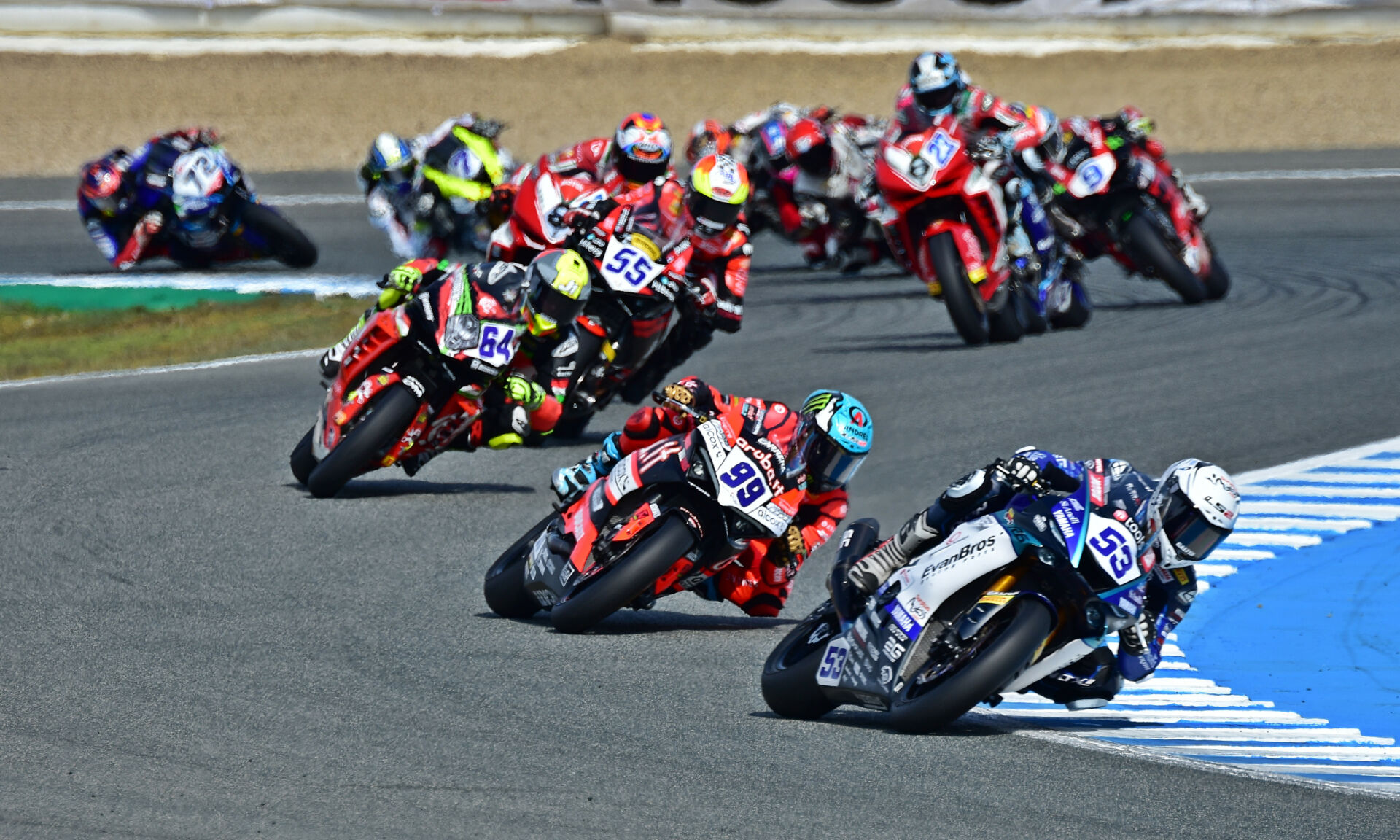
Currently, there is enough interest in literbike-class machines to keep the Superbike class at that level. Kawasaki has just introduced a new Bimota-branded machine for the class. Ducati, BMW, and Kawasaki will be racing new and updated 1000cc racebikes in 2025.
But market and safety considerations mean that the series must be open to do what is necessary to maintain manufacturer interest and to keep speeds safe. The tracks are not changing, so the machines must stay within performance parameters that maximize safety.
Lavilla paused after he was asked if Supersport could replace Superbike. Then he took a very deep breath before responding. “Honestly speaking, I have an idea, but it needs to be up to manufacturers, the national championships. But what I can tell you is that the Supersport platform … could be something different, something bigger. The tools are there to progress. It’s just a matter of what the manufacturers want to follow because we have to promote what manufacturers sell.
“Manufacturers sell what is best for their marketing strategies. But then we need to place that into the environment of a nice show for them to promote their machines. If these tendencies change in terms of marketing issues or safety issues, we have to be open-minded and clear about what will be next. I feel we are ready for whatever will come.”


